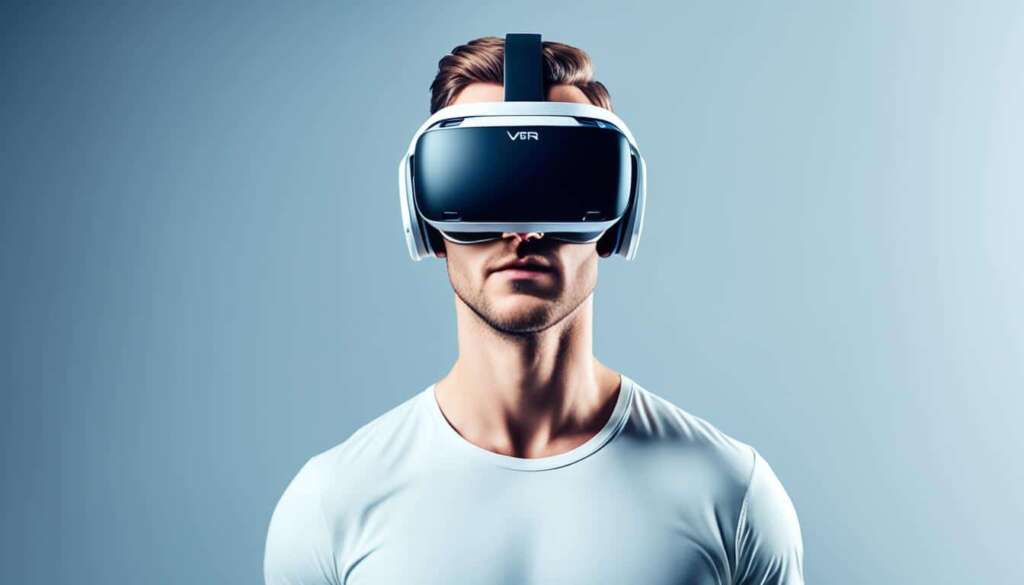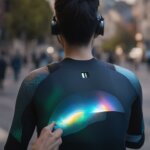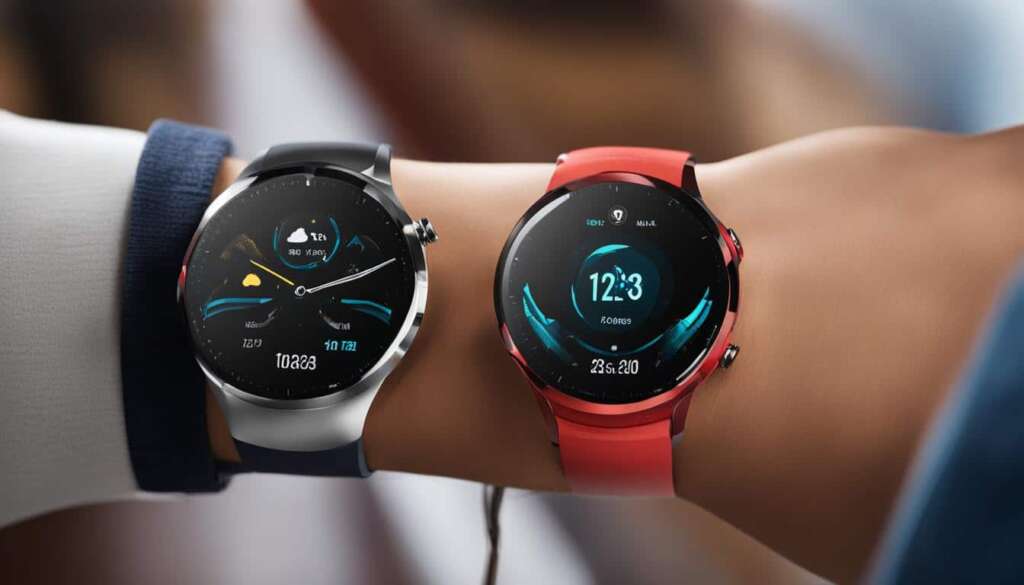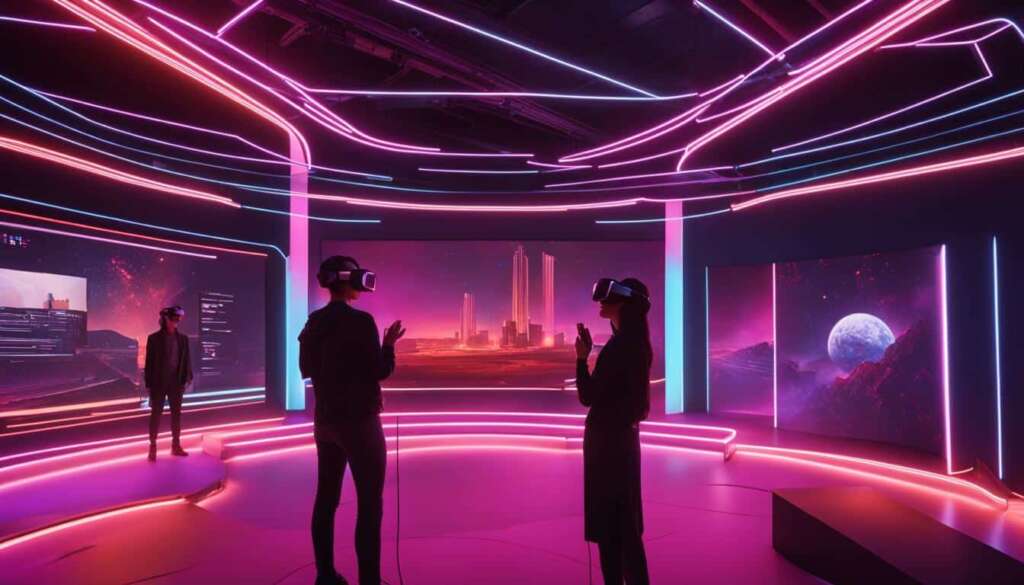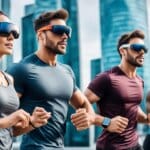Table of Contents
Virtual reality (VR) technology has revolutionized the way we experience digital content, immersing us in virtual worlds and enhancing our entertainment and gaming experiences. With the growing demand for innovative wearable devices, Apple, a powerhouse in consumer electronics, has set its sights on entering the VR industry with its own VR headset. However, the path to success in this dynamic market is not without its challenges for Apple.
One of the primary hurdles Apple faces is in making VR headsets cool and appealing to consumers. While the technology itself has become more advanced, creating high-quality graphics and realistic simulations, the market is already saturated with competitors offering compelling VR experiences.
Apple’s reputation for innovation and design has played a significant role in its success with products like the iPhone and Apple Watch. However, applying these principles to VR headsets introduces new complexities. Apple must not only create a visually appealing headset but also focus on providing a comfortable and user-friendly experience that consumers can enjoy for extended periods.
Furthermore, Apple’s seamless integration within its existing ecosystem of products and services, such as iCloud and the App Store, has been a major selling point for its customers. Ensuring that the VR headset integrates seamlessly with other Apple devices and apps will be crucial for enhancing the overall user experience and distinguishing Apple’s VR offering from competitors.
Finally, the development of VR hardware and software is a multifaceted process. Apple faces the challenge of perfecting motion tracking, minimizing latency, and ensuring compatibility with existing VR content and applications. Cultivating relationships with developers and building a robust content ecosystem will be essential for Apple to provide a wide array of VR experiences and apps, ultimately attracting and retaining consumers.
The Evolution of VR Technology and Consumer Expectations
The VR industry has witnessed remarkable progress in technology, enabling users to have immersive experiences and engage in realistic simulations. As the popularity of VR headsets continues to rise, consumers now have higher expectations for these devices. They demand high-quality graphics, comfortable designs, and seamless user experiences.
In order for Apple to succeed in the competitive VR market, they need to meet or exceed these consumer expectations. By delivering cutting-edge VR technology and addressing key consumer demands, Apple can differentiate their VR headset and persuade consumers to choose their product over other options.
One crucial aspect of consumer expectations is the demand for immersive experiences. Users want to feel fully transported to virtual worlds, whether it’s exploring breathtaking landscapes, participating in adrenaline-fueled adventures, or engaging in realistic simulations. To fulfill these expectations, Apple must provide VR experiences that offer a high level of immersion, capturing users’ attention and creating memorable moments.
In addition to immersive experiences, consumers value high-quality graphics in VR headsets. The visual realism of virtual worlds plays a significant role in enhancing the overall experience. Users expect crisp and detailed visuals, with vibrant colors and realistic textures. Apple’s VR headset must deliver exceptional graphics, allowing users to feel completely immersed in their virtual environment.
Comfortable design is another essential factor influencing consumer preferences. VR headsets that are bulky, heavy, or uncomfortable to wear for extended periods can deter users from adopting the technology. Apple needs to prioritize ergonomics and develop a headset that provides a comfortable fit, ensuring users can enjoy VR experiences for longer durations without discomfort.
Furthermore, consumers expect seamless user experiences when interacting with VR devices. Navigating menus, accessing content, and controlling virtual environments should be intuitive and user-friendly. Apple’s expertise in designing user-friendly interfaces can be leveraged to create a smooth and effortless VR experience.
Apple’s Track Record in Innovation and Design
Apple has established itself as a trailblazer in the tech industry, known for its unparalleled commitment to innovation and design. With a long history of groundbreaking products and a loyal customer base, Apple has consistently delivered user-friendly interfaces, sleek aesthetics, and seamless integration within the Apple ecosystem. These qualities have become synonymous with the Apple brand, setting it apart from competitors and earning it a reputation for excellence.
When it comes to VR headsets, Apple faces a unique challenge in maintaining its standards of innovation and design. The sleekness and elegance that Apple products are known for must extend to the VR headset while balancing the need for comfort during extended use. Apple’s commitment to seamless integration within its ecosystem is an advantage that could position its VR headset as the go-to choice for Apple users.
To further differentiate itself, Apple must focus on creating a user-friendly interface for its VR headset, ensuring that it can be easily operated by both tech enthusiasts and casual users. Intuitive controls and a streamlined experience will be essential in captivating and retaining users. Additionally, Apple’s dedication to design must shine through in the aesthetics of the headset, capturing the attention of consumers with its visually appealing form.
In summary, Apple’s success in the VR headset market will heavily rely on its ability to leverage its expertise in innovation, design, and user-friendly interfaces. By seamlessly integrating the VR headset into the broader Apple ecosystem, Apple can provide a cohesive and immersive experience for its users. The combination of sleek aesthetics, comfortable design, and seamless integration holds the key to Apple’s success in the competitive VR market.
The Complexities of VR Hardware and Software Development
Developing VR hardware and software involves a series of complex processes that Apple must navigate to enter the competitive VR market successfully. One key challenge is motion tracking, the technology that enables accurate tracking of users’ movements in the virtual world. Apple will need to design a robust motion tracking system to ensure a seamless and immersive VR experience for its users.
Another crucial aspect of VR development is minimizing latency, the delay between a user’s actions and the corresponding response in the virtual environment. High latency can lead to motion sickness and a disorienting experience. Apple will need to prioritize reducing latency to create a comfortable and immersive experience for VR headset users.
In addition to hardware challenges, Apple must also focus on software development to ensure compatibility with existing VR content and applications. App compatibility is a crucial factor in enhancing the appeal of a VR headset to consumers. Apple must invest in cultivating relationships with developers to ensure a wide range of VR experiences and apps are available for their headset. A robust content ecosystem is essential for the success of their VR venture.
By addressing these technical complexities and investing in the development of cutting-edge VR hardware and software, Apple can position itself as a competitive player in the VR market. Through strategic collaborations and a focus on creating a seamless and immersive user experience, Apple has the potential to capture the attention of consumers and solidify its place in the evolving world of virtual reality.
FAQ
What are the challenges Apple faces in making VR headsets cool?
Apple faces challenges in designing VR headsets that are visually appealing, comfortable to wear, and integrate seamlessly with their ecosystem.
What are consumer expectations for VR headsets?
Consumers expect high-quality graphics, immersive experiences, and realistic simulations from VR headsets.
What is Apple’s track record in innovation and design?
Apple is known for its innovative and user-friendly interfaces, sleek aesthetic designs, and seamless integration within the Apple ecosystem.
What complexities are involved in VR hardware and software development?
VR hardware and software development involves challenges such as motion tracking, minimizing latency, and ensuring app compatibility and a rich content ecosystem.

